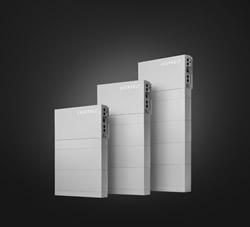PVinsights : The weakening China domestic demand makes solar component prices deteriorate.
In the US, lots of Chinese solar panel makers are doing the serious price promotion to digest their inventories, especially for low efficiency products. In EU, in addition to the weakening EURO against the USD, the slow demand recovery in key European market keeps prices from agumenting.
Overall module price down trend goes worst this week. In the US, lots of Chinese solar panel makers are doing the serious price promotion to digest their inventories, especially for low efficiency products. In EU, in addition to the weakening EURO against the USD, the slow demand recovery in key European market such as German and Italy keeps prices from augmenting, as the UK is the only market to demonstrate robust demand. Meanwhile, China module players building stocks in their EU and US branches are also strengthening the pressure on the price levels in these two regions. In Japan, although the JPY is appreciating against the USD, the module prices still step down because of domestic module players trying to reduce their inventory levels before the end of their financial year, and offering low price products. Moreover, In order to offset China demand slow down, Chinese module sellers are also seriously cutting their selling price to secure orders for the current strong solar installation season in Japan. On the Chinese market, the diminishing domestic demand as the installation frenzy comes to an end is making module prices drop. Overall, as global demand remains weak, worldwide module price are falling at the current point.
Affected by the sluggish demand expected after Lunar New Year, overall multi cell prices are declining this week. In the solar cell market, major solar cell buyers are targeting high efficiency solar cells, especially for 17.6% above. Solar cell makers are forced to keep low efficiency solar cell into their stocks. When the low efficiency inventory is continuous increasing and gradually out of spec, solar cell players are dumping low efficiency solar cell with lower price recently. The decreasing prices for low-efficiency cells were further triggered by Taiwanese companies who are offering low prices for their low-efficiency cells in order to reduce their inventories. On the other hand, mono cells prices also drop, due to the continuous weak demand in Japan. At this moment, Japanese solar cell buyers are adjusting their solar cell and module inventories down to meet their financial targets by the end of their fiscal year. As a result, overall cell price are also dropping.
Wafer price is worsening as well this week. The procurement activities of multi wafer buyers are at the halt as buyers are not able to meet their wafer purchasing price targets. To stimulate multi wafer demand, 1st tier wafer producers now are also thinking to adjust their selling price down. As the difficult cash flow, 2nd tier multi wafer makers are still offering lower price in the market. On the contrary, most solar wafer makers are still producing wafer at high production utilization rates now, while the demand is still not strong enough due to insufficient downstream demand recovery. Furthermore, the inventory adjustments of Japanese solar players also impacted mono wafer demand weak. Therefore, oversupply drives down both multi and mono wafer prices.
Price pressure of polysilicon is lessening in comparison to the end of Dec. As polysilicon suppliers and traders have cut down their inventory levels by the end of 2014, the dumping activities seem to cease. Without the aggressive price competition, low-price polysilicon offer becomes rare in the spot market. Nonetheless, Chinese polysilicon makers still continue to decrease their price quotes in a moderate manner as low manufacturing costs allow them room to cut their price further, as they are still running their production at full capacity. Hence, overall polysilicon price falls, but only mildly this week.
Featured Product

